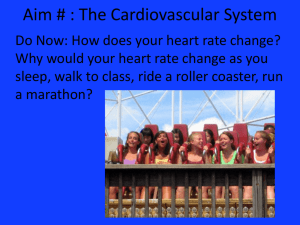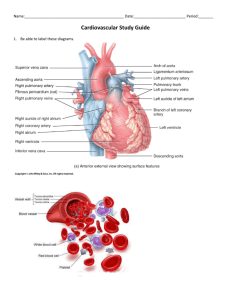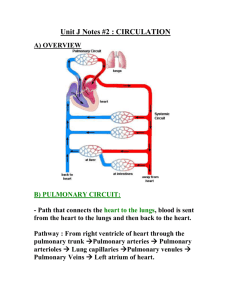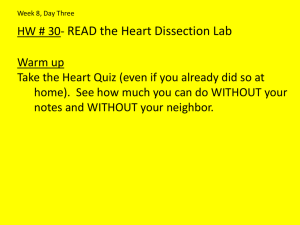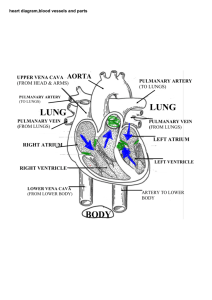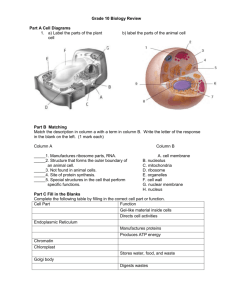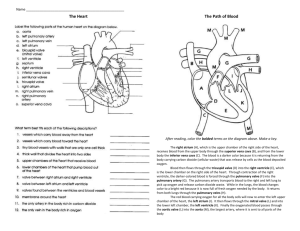How Your Heart Works Handout
advertisement
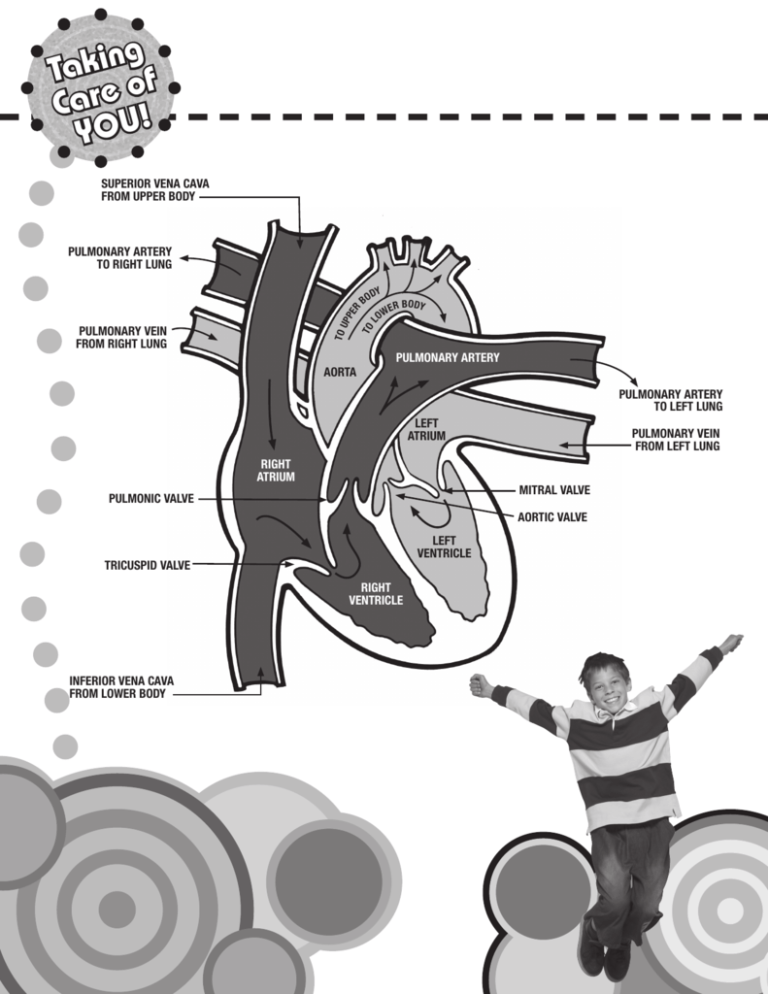
g n i k a T f o e r Ca ! YOU SUPERIOR VENA CAVA FROM UPPER BODY DY ER BODY OW TO TO U PULMONARY VEIN FROM RIGHT LUNG BO L PP ER PULMONARY ARTERY TO RIGHT LUNG AORTA PULMONARY ARTERY PULMONARY ARTERY TO LEFT LUNG LEFT ATRIUM RIGHT ATRIUM PULMONARY VEIN FROM LEFT LUNG MITRAL VALVE PULMONIC VALVE AORTIC VALVE LEFT VENTRICLE TRICUSPID VALVE RIGHT VENTRICLE INFERIOR VENA CAVA FROM LOWER BODY Lesson: How Your Heart Works The walls of the heart are made of thick muscle. When they contract, the blood is pushed through tubes called blood vessels. There are different types of blood vessels. • A rteries are large, thick blood vessels that carry blood away from the heart. They are also the places where you can sometimes feel your pulse. The aorta is the largest artery. • V eins are large blood vessels that carry blood back to the heart. Veins carry carbon dioxide, sit closer to the skin and have a bluish color. • C apillaries are the smallest blood vessels. They carry blood to and from all the small places in the body. Capillaries feed into veins and veins feed into arteries. You can think of the heart like two pumps side by side. The pump on the right side moves blood to your lungs, where waste gases such as carbon dioxide are removed and oxygen is added. Freshly oxygenated blood returns to the pump on the left side, which moves it out into the rest of your body. Your heart is similar to a two-story house with four rooms: two rooms on the top floor and two rooms on the bottom floor. Each room is called a chamber. The right and left atrium are the upper chambers. The right and left ventricle are the lower chambers. Blood carrying carbon dioxide travels from the right atrium, to the right ventricle, then into the lungs where carbon dioxide is exchanged for oxygen. Blood carrying oxygen travels from the left atrium to the left ventricle and onward to the rest of the body. The heart contains valves that control the blood flow direction. Think of them as doors between the rooms that open and close to let the blood flow in or to stop the blood flow. Right Atrium Left Atrium Right Ventricle Left Ventricle Lungs Body This activity meets the following National Standards for Physical Education: Standard 2: Demonstrates understanding of movement concepts, principles, strategies and tactics as they apply to the learning and performance of physical activities. Do You Know? When you pledge allegiance to the flag, you may place your hand over the left side of your chest because that’s where most people think the heart is. Actually the heart is in the middle of the chest between the lungs.


